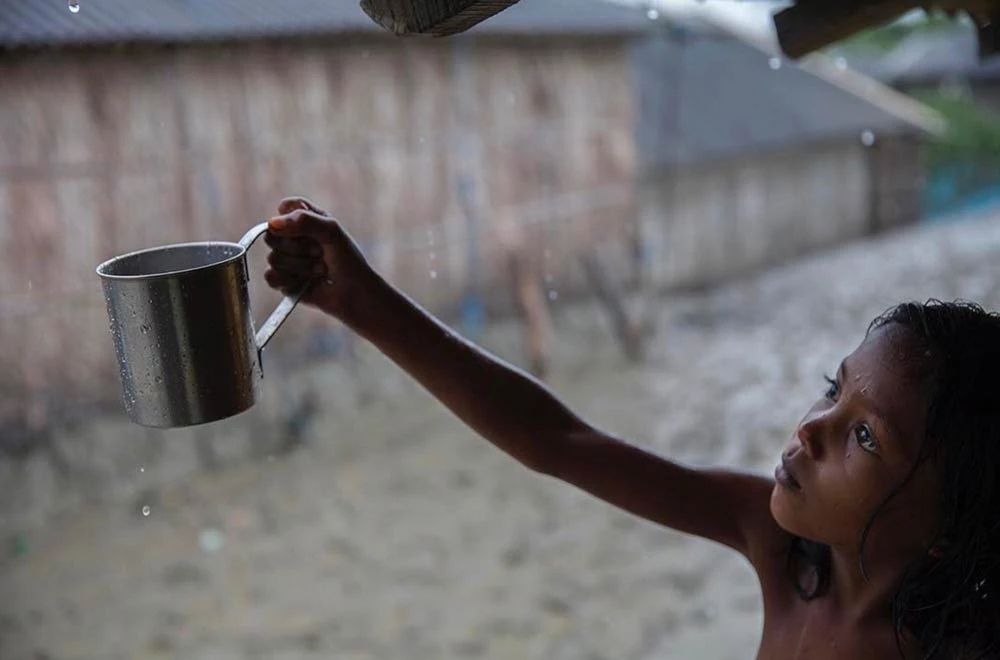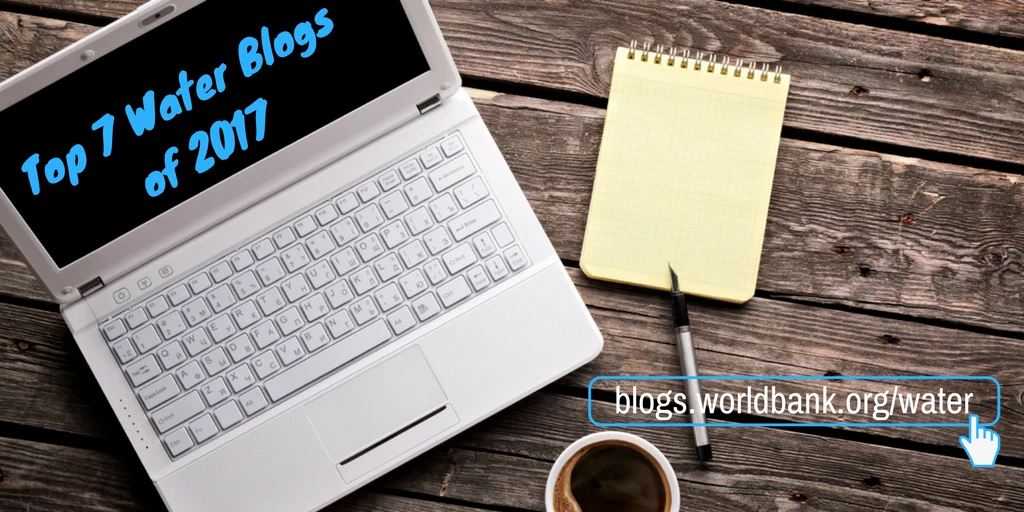As a new year of insightful and interesting blogs begins here, we celebrate some of the most popular entries on The Water Blog from 2017.
Thanks to our readers and bloggers, The Water Blog is growing every year. From global, to regional, to national, and local perspectives, and covering key themes that resonate with a diverse community, we strive to ensure our content makes an important contribution to the global dialogue on water issues, and offers readers fresh insights as well as vital resources they otherwise may have not known about.
Here are our top seven blogs of 2017:
1. Standing for the value of water
2017 saw Tropical Storm Harvey in the United States, monsoons and flooding in India, Bangladesh, and Nepal, and an ongoing drought in the Horn of Africa. Billions of dollars’ worth of damage to economies, communities displaced, and people killed – it’s a terrifying window into the devastating impacts of water-related extremes. Urgent action is needed to manage these hazards and minimize future suffering. “Valuing water must be an essential part of the policy agenda if we are to bend the curve toward a water-secure world,” Jennifer Sara, Director of the World Bank Water Global Practice, blogged.
2. How to test water quality? Chemical tests for limited budgets
Sustainable Development Goal 6 (SDG6) calls for “universal and equitable access to safe and affordable drinking water” by 2030. This makes water quality monitoring essential. After all, how can we assess progress towards #SDG6 without knowing whether water is safe to drink? Thanks to modern chemistry, we can detect thousands of chemicals in water, even at extremely low concentrations. The ever-growing list of tests that are available can feel overwhelming, and the vast majority of methods require state-of-the art lab facilities. Fortunately, a much smaller and more practical set of tests can provide a good sense of chemical water quality for monitoring purposes. There are low-tech versions of these tests for situations when budgets are limited.
3. Water works: how a simple technology in Dhaka is changing the way people get clean water
Clean water is an issue in Dhaka, Bangladesh, and other overcrowded cities in the region, where contamination by bacteria can lead to high rates of diarrhea, harming children’s growth and health. Amy Pickering, who specializes in water quality and diarrheal disease, was searching for a water treatment technology that could work without electricity and operate in Dhaka’s extreme weather. So, she assessed a unique product that automatically dispenses small amounts of chlorine to create safe drinking water. The dispensers were installed at strategic water points—usually communal handpumps—that typically serve anywhere from 10 to 100 families.
4. Changing the way the world views and manages water: Storytelling through photos
#All4TheGreen Photo4Climate Contest Special Blue Prize awarded Probal Rashid, from Bangladesh, for the best photo showcasing the value of water.

Due to sea-level rising resulting from climate change, limited sweet water sources of the coastal area have widely been contaminated with saline water.
Photo: Probal Rashid
“It’s a great honor to win this competition and I hope it will create more awareness on this issue. Rainwater is the main source of drinking water (for many communities in Bangladesh) due to sea level rise. Sometimes people have to travel long distances to collect drinking water,” said Probal Rashid, a documentary photographer. The Special Blue Prize was sponsored by High Level Panel on Water and Connect4Climate.
5. Water and War: The turbulent dynamics between water and fragility, conflict, and violence
When water insecurity repeatedly affects populations, it can act as a risk multiplier, fueling the perception that institutions and governments are ‘not doing enough’, exacerbating existing grievances, creating new risks, and deepening inequities. In turn, this contributes to destabilizing already fragile contexts, aggravating the challenges of water management, and perpetuating a vicious cycle of water insecurity and fragility. “We must work to disrupt this vicious cycle of water insecurity and fragility,” blogged Claudia Sadoff, Director General, International Water Management Institute (IWMI), previously Global Lead for Water Security and Integrated Resource Management at the World Bank.
6. Investing in wastewater in Latin America can pay off
Only 50% of the population in Latin America is connected to sewerage and a mere 30% of those households receive any treatment. There is also a large disparity in the levels of treatment per country – for example, Chile treats 90% of its wastewater, where nearby Costa Rica treats approximately 4% of its wastewater. Diego Rodriguez, a senior economist with the World Bank Water Global Practice, blogged about how to efficiently invest in wastewater and other sanitation infrastructure to achieve public health and environmental benefits and to enhance the quality of urban life.
7. Changing the village, changing the country
India has about 650,000 villages. Many have tried different techniques to persuade people to use a toilet - some successfully, some not. What if there were a “Google of Sanitation”, where you could search for success stories of others who have faced the same situation, and a “LinkedIn of Sanitation” where you could reach out to peers with questions? India’s government and the World Bank are together creating a platform for this, using systematic knowledge-sharing and learning as an approach to support the Swachh Bharat Mission and change behaviors. “The approach is based on the belief that many excellent local sanitation solutions exist and can be replicated across the country,” Robin van Kippersluis, a senior knowledge and learning officer at the World Bank, blogged.
We’d love to hear what you would like to read here in 2018, too. Let us know in the comments or via Twitter (@WorldBankWater). And if you’d like to contribute to The Water Blog in the new year, get in touch.
Wishing you a successful and water-secure 2018!



Join the Conversation